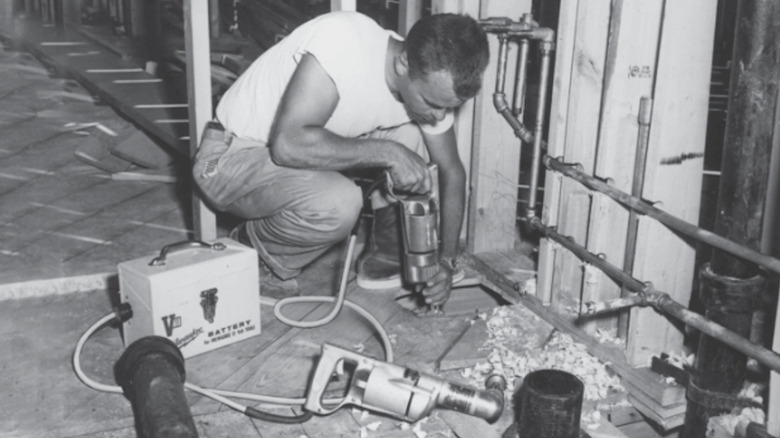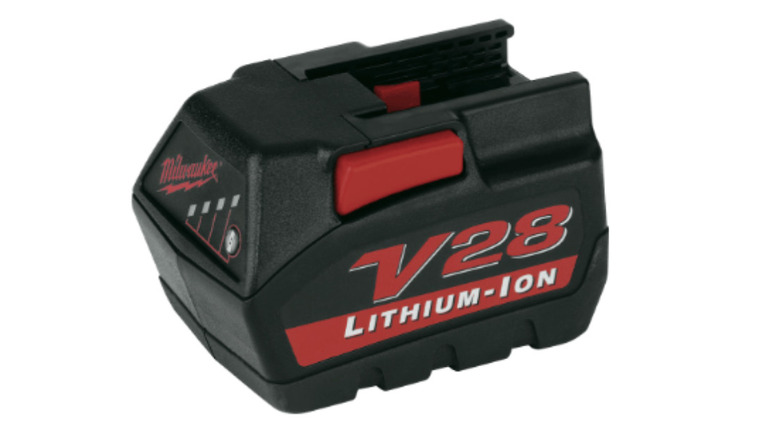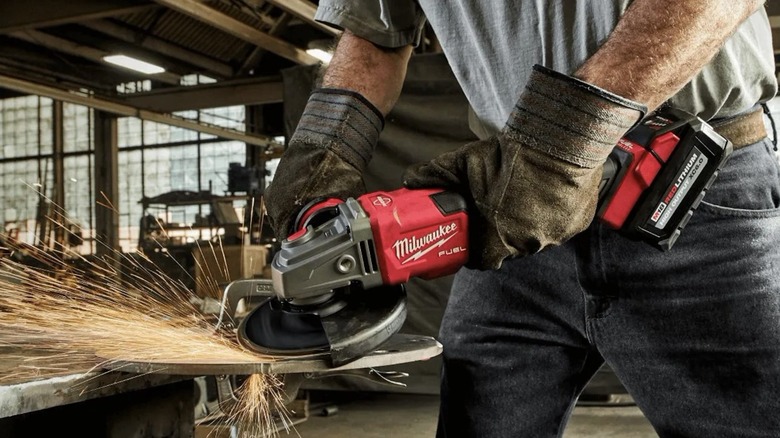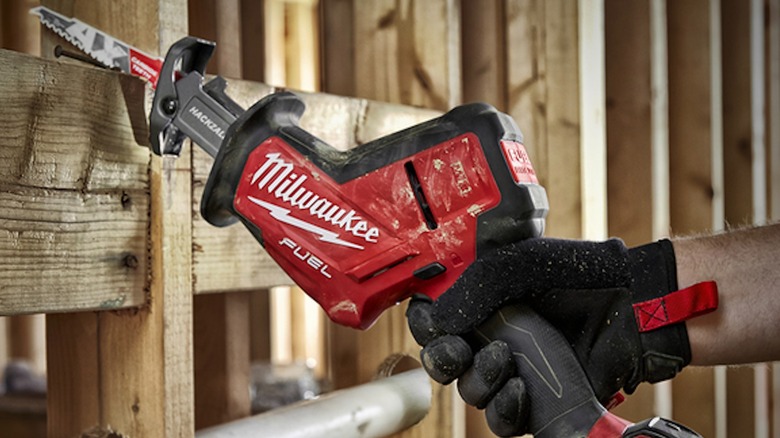The Power Tool Technology You May Not Know Milwaukee Invented
We may receive a commission on purchases made from links.
Milwaukee has been making tools over a century now, so it's no surprise that the brand has a long, storied history. Not only has the company manufactured many high-quality tools over the years, but Milwaukee has also introduced some of the first products of their kind — innovations that changed the power tool industry across the board. For instance, Milwaukee founder A.H. Petersen designed the Hole Shooter, the first-ever one-handed power drill, which was commissioned by Henry Ford to increase efficiency on his assembly lines.
Another Milwaukee innovation came more recently — in 2005, the company introduced the first lithium-ion battery designed for cordless power tools. Over the next 20 years, this game-changing power tool technology spread throughout the industry and is now used to power most cordless power tools today, including those by all major tool brands.
Before Milwaukee introduced Li-ion technology, cordless power tools typically relied on nickel-cadmium (NiCd) batteries. NiCd batteries are pretty effective in both cold and hot temperatures while offering a long life cycle and consistent power output. However, Milwaukee saw an opportunity in investing in lithium battery technology, which not just improved upon the power source but would also allow the brand to offer more diverse cordless tools. The company ultimately spent millions of dollars designing its first Li-ion battery — the V28. Considering the technology is still used today and Milwaukee is currently one of the best major power tool brands on the market, its investment appears to have been worth it.
Lithium-ion is more expensive but offers several advantages over nickel-cadmium
The main advantage to Li-ion batteries is that they offer a higher energy density than nickel-cadmium cells. This means they can provide more power in a smaller package, which is clearly an advantage when you're attaching one to your handheld power tool. Certain power tools that require more energy and previously needed to be plugged in (as a NiCd battery would be too large to be practical) can now utilize Li-ion technology and operate cordlessly. Milwaukee could thus expand its line of cordless products, as well as make tools it already offered even lighter and more comfortable to use and carry around.
Another advantage to Li-ion cells is that they have little to no battery memory effect. Memory effect describes the overall capacity of a battery dipping over time if it's not fully used up before being recharged. While NiCd batteries perform well in extreme temperatures, Li-ion cells offer even more versatility, which is useful for outdoor work in the winter or summer. They also have a lower self-discharge rate and are less toxic than nickel-cadmium, which is better for the environment.
In addition to being lighter, Li-ion batteries are also especially useful for cordless tools because they recharge faster. However, lithium batteries are generally more expensive to make (and thus pricier for consumers). It could have been a risky move for Milwaukee to upgrade its technology and its prices are still higher than many of its competitors. But, the introduction of the technology pushed the industry forward and made cordless tools a much more viable option.
Milwaukee has continued to improve upon its battery technology
The first Li-ion battery launched by Milwaukee, the V28, powered products such as cordless work lights, circular saws, and hammer drill/drivers. It was only three years later that the company expanded its lithium-ion product lines with two different lines of batteries and tools that Milwaukee still sells today — the M12 and M18 systems. These systems allowed users to build a collection of cordless products that could share the same interchangeable batteries and chargers for a more efficient tool setup. The M12 system includes more compact and portable tools that run on 12V Li-ion batteries, while the M18 system offers more robust and powerful cordless tools.
Both lineups offer dozens of different battery-powered products, such as drills, saws, inverters, lights, fans, and radios. In 2010, Milwaukee launched its Redlithium brand of batteries, which were even more efficient and incorporated temperature management technology, which helps keep power cells from overheating and improves charging and discharging.
Milwaukee has continued to innovate its tools since then, introducing both new products and new technologies, such as its M18 Fuel equipment. The difference between M18 and M18 Fuel tools is that the latter run on brushless motors, which are slower to overheat, among other advantages. Milwaukee's MX Fuel line has brought even larger equipment to the cordless market with larger, more powerful batteries, and includes products like plate compactors, sewer drum machines, and 3600W generators.
Milwaukee also sold the first reciprocating saw
Milwaukee has innovated the power tool industry in other ways besides battery technology. As previously mentioned, the company was already introducing new products early in its history. In 1951, Milwaukee launched another cordless tool that has since become ubiquitous in the industry: the reciprocating saw. Milwaukee called its invention the Sawzall — which is a trademark name and not the generic name for the tool.
Milwaukee's initial Sawzall was the first cordless hacksaw to use a reciprocating mechanism with only three moving parts. With the ability to move a serrated blade back and forth many times a minute with just the effortless push of a button, the recip saw has revolutionized everything from construction to demolition. Because it can also use different attachments, the reciprocating saw can be one of the most versatile tools in your kit. It can slice through wood, of course, but also cut through pipes if you're doing plumbing work. Additionally, reciprocating saws are great for removing grout and are one of the most useful tools for removing mortar.
The device is so useful that you can find reciprocating saws from nearly every major tool brand. The company that designed and sold the original, though, still tops SlashGear's list of the best brands for cordless reciprocating saws. These days, Milwaukee makes more than one reciprocating saw — including a corded option and models powered by both M12 and M18 lithium-ion batteries.



